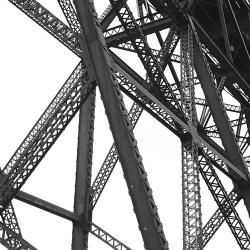Source Institutions
Add to list Go to activity
Activity link broken? See if it's at the internet archive

Learners investigate stress and strain by designing, building, and testing beams made from polymer clay. They compete to find the best beam strength to beam weight ratio, and learn about the trade-offs engineers make when designing a structure. Time estimate for activity is spread over two meetings. This activity can be combined with other activities to create a larger lesson. Resource contains suggestions for assessment, extensions, and scaling for different levels of learners.
- 5 to 10 minutes
- 30 to 45 minutes
- $1 - $5 per student
- Ages 11 - 18
- Activity, Experiment/Lab Activity
- English
Quick Guide
Materials List (per student)
- 2 oz. of a polymer clay, such as "Sculpey Clay"
- String or rope (to wrap the around the beam several times, about 2 ft.)
- Weights to hang on the string (up to 100 pounds for a 7-inch long beam.)
- Scale to measure beam weight
Subjects
-
Engineering and Technology
-
Engineering
- Manufacturing Engineering
- Metallurgy and Materials Engineering
-
Engineering
-
Mathematics
-
Number and Operations
- Fractions
-
Number and Operations
-
Physical Sciences
-
Motion and Forces
- Gravity
-
Structure and Properties of Matter
- Mass and Weight
-
Motion and Forces
-
The Nature of Science
-
The Scientific Process
- Conducting Investigations
-
The Scientific Process
-
The Nature of Technology
-
The Design Process
- Research and Development
- Invention and Innovation
- Problem Solving
- Troubleshooting and Maintenance
-
The Design Process
Audience
To use this activity, learners need to:
- see
- read
- touch
Learning styles supported:
- Involves teamwork and communication skills
- Involves hands-on or lab activities
Other
Includes alignment to state and/or national standards:
This resource is part of:
Access Rights:
- Free access
By:
- Yakacki, Chris ; Heavner, Ben ; Schaefer Zarske, Malinda ; Carlson, Denise
Source Collection
- TeachEngineering
Rights:
- All rights reserved, Regents of the University of Colorado, 2004
Funding Sources:
- Fund for the Improvement of Postsecondary Education (FIPSE)
- U.S. Department of Education
- National Science Foundation, 0226322
